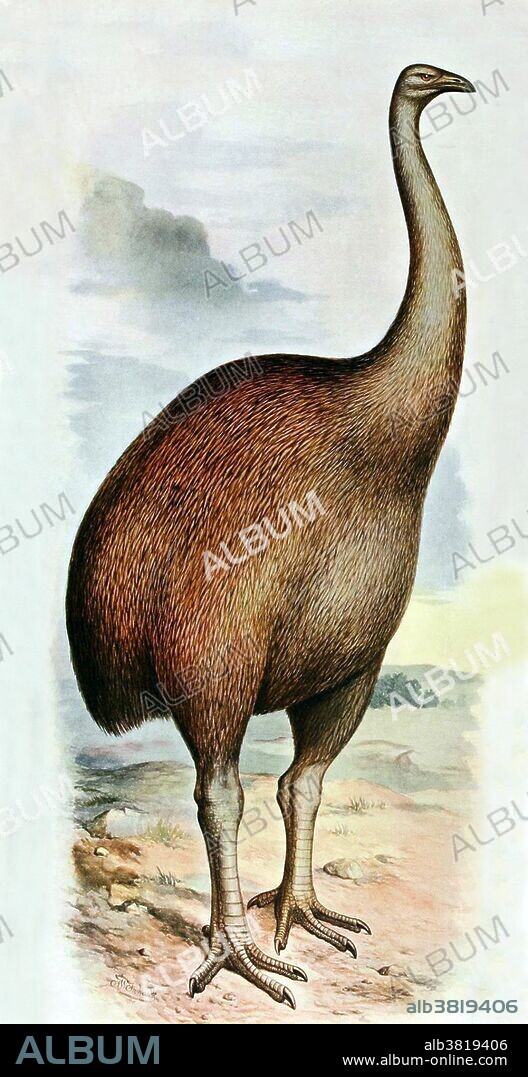alb3819406
Giant Moa (Dinornis ingens), Cenozoic Bird

|
Zu einem anderen Lightbox hinzufügen |
|
Zu einem anderen Lightbox hinzufügen |



Haben Sie bereits ein Konto? Anmelden
Sie haben kein Konto? Registrieren
Dieses Bild kaufen

Titel:
Giant Moa (Dinornis ingens), Cenozoic Bird
Untertitel:
Siehe automatische Übersetzung
The giant moa (Dinornis) is an extinct genus of ratite birds belonging to the moa family. Like all ratites it was a member of the order Struthioniformes. The Struthioniformes are flightless birds with a sternum without a keel. They also have a distinctive palate. It was endemic to New Zealand. Dinornis may have been the tallest bird that ever lived, with the females of the largest species standing 12 feet. This animal appeared during Cenozoic era, the most recent era of geologic time, from about 65 million years ago to the present. The Cenozoic Era is characterized by the formation of modern continents and the diversification of mammals and plants. Grasses also evolved during the Cenozoic. The climate was warm and tropical toward the beginning of the era and cooled significantly in the second half, leading to several ice ages. Humans first appeared near the end of this era. Taken from "Extinct birds : an attempt to unite in one volume a short account of those birds which have become extinct in historical times : that is, within the last six or seven hundred years : to which are added a few which still exist, but are on the verge of extinction" by Baron Lionel Walter Rothschild, 1907.
Bildnachweis:
Album / Science Source / Biodiversity Heritage Library
Freigaben (Releases):
Model: Nein - Eigentum: Nein
Rechtefragen?
Rechtefragen?
Bildgröße:
2167 x 4200 px | 26.0 MB
Druckgröße:
18.3 x 35.6 cm | 7.2 x 14.0 in (300 dpi)
Schlüsselwörter:
DINORNIS • ERDNEUZEIT • FAUNA • ILLUSTRATION • ILLUSTRATIONS • LANDWIRTSCHAFT • PALAEONTOLOGIE • PALAEOZOOLOGIE • PALÄONTOLOGIE • PALÄOZOOLOGIE • PRAEHISTORISCH • VOGEL • VÖGEL
 Pinterest
Pinterest Twitter
Twitter Facebook
Facebook Link kopieren
Link kopieren Email
Email
